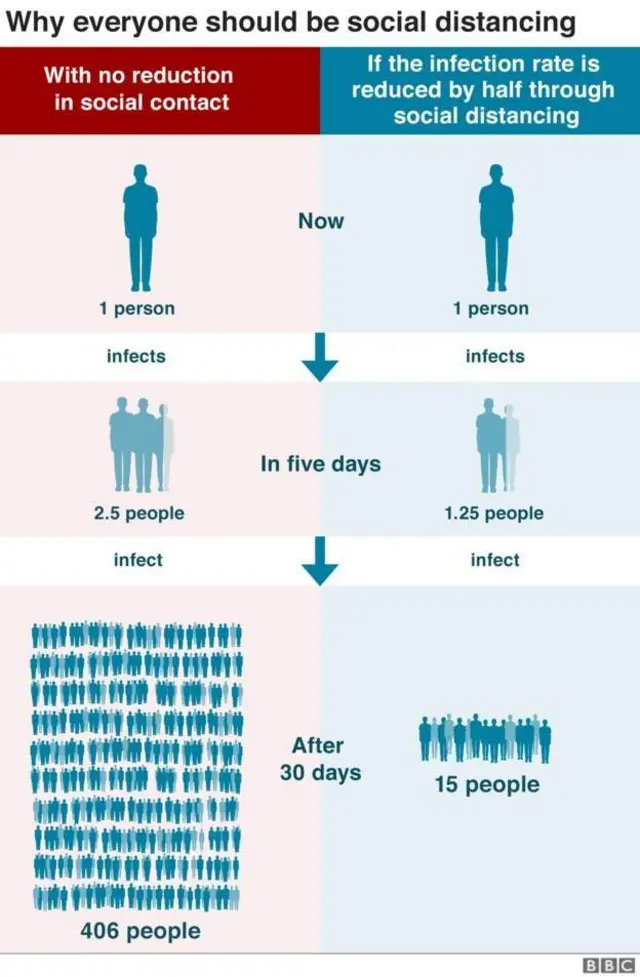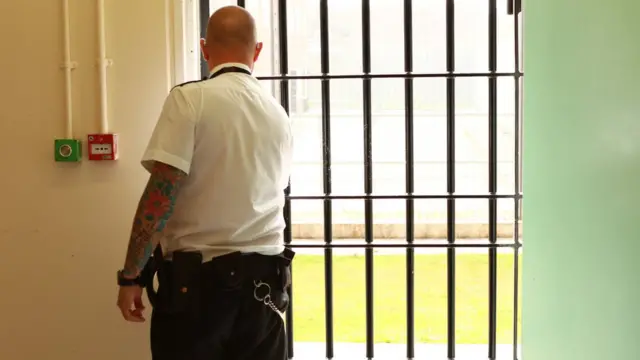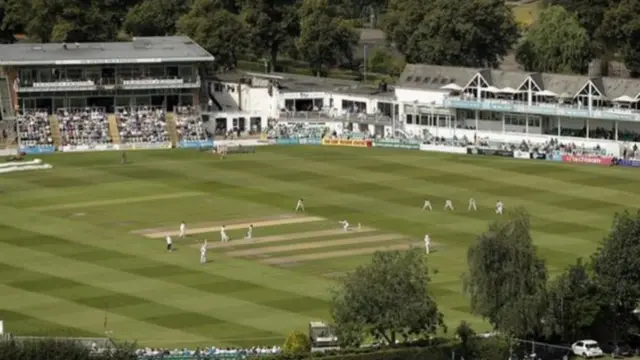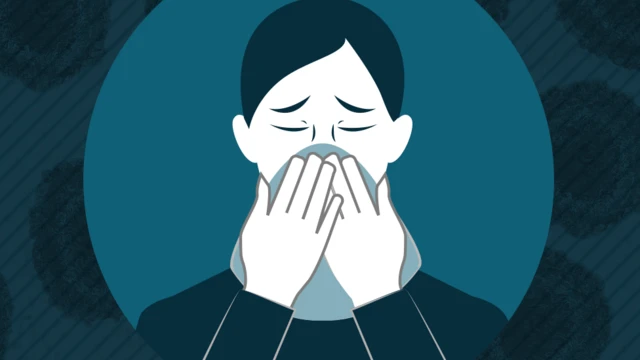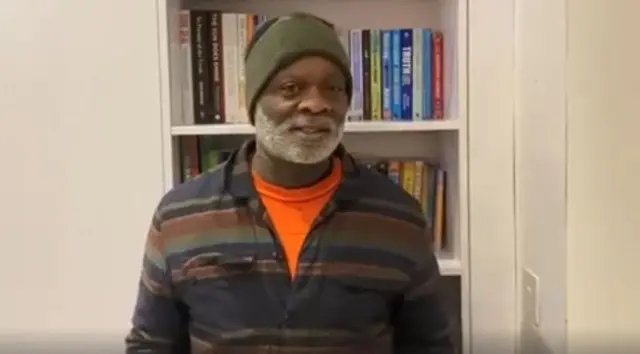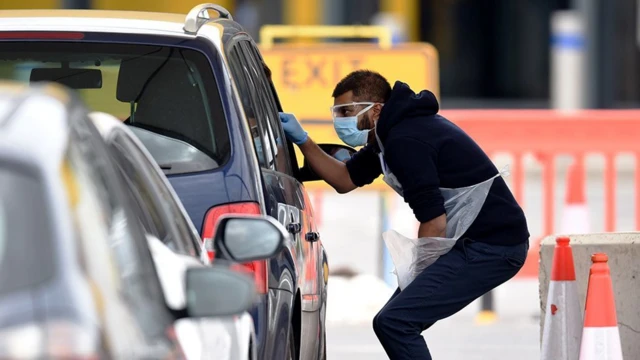How restricted movement means fewer casespublished at 14:43 BST 4 April 2020
 Robert Cuffe
Robert Cuffe
BBC head of statistics
You might be looking out of your window at sunshine and wondering if you really have to follow the government's instruction to stay home.
Well, this is what lies behind the government's thinking:
- Scientists currently believe each person infected with Covid-19 infects a further 2.5 people over the course of around five days
- That means that 30 days after the first infection, 406 people will have the virus
- If we reduce our exposure by half, that first infection would only have led to 15 other infections in 30 days - less than 5% of 406.
Of course, it's not guaranteed that we can reduce our exposures by half, and it takes a few weeks for the effect of any intervention to show up.
But if we reduce exposure by, say, a third, the reduction is just over 85% (or 53 infections).
Look at the graphic below, which may make the maths a little clearer.
Also, here is our guide on self-distancing, and how to do it. You're probably going to need it.
